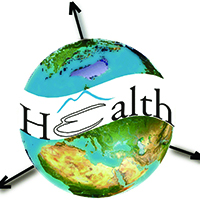Geographic variability of post-disaster mental health: case study after the 2017 flood in Bangladesh

All claims expressed in this article are solely those of the authors and do not necessarily represent those of their affiliated organizations, or those of the publisher, the editors and the reviewers. Any product that may be evaluated in this article or claim that may be made by its manufacturer is not guaranteed or endorsed by the publisher.
Authors
Every year Bangladesh faces enormous damages due to flooding. Facing these damages the Government adopts various recovery approaches. However, the psychological dimension of any disaster is generally overlooked in disaster management. Researchers have found that the spatial distribution of post-disaster mental health can help the authorities to apply recovery procedures where they are most needed. For this research, Posttraumatic Stress Checklist (PCL-5), Patient Health Questionnaire (PHQ-9) and Generalized Anxiety Disorder-7 (GAD-7) were used to estimate posttraumatic stress, major depressive disorder and anxiety following three episodes of severe floods in 2017 that affected at least 8 million people. To better understand the spatial pattern of psychological vulnerability and reach a comprehensive scenario of post-disaster mental health, Moran's I was applied for spatial autocorrelation and Pearson's correlation and regression analysis for a study of the relationship between the psychological aspects. It was found that psychological vulnerability showed a spatial clustering pattern and that there was a strong positive linear relationship among psychological aspects in the study area. This research might help to adopt disaster management policies that consider the psychological dimension and spatial distribution of various psychological aspects to identify areas characterized by high vulnerability and risk so that they can be reached without delay.
How to Cite
PAGEPress has chosen to apply the Creative Commons Attribution NonCommercial 4.0 International License (CC BY-NC 4.0) to all manuscripts to be published.













